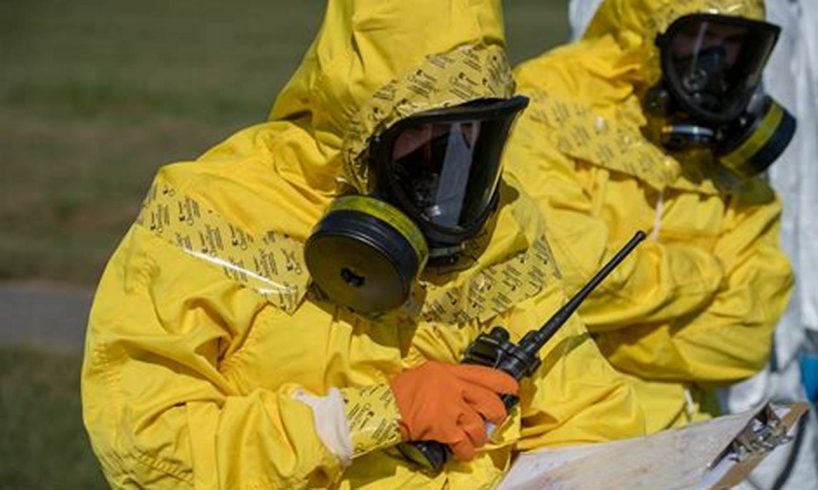
A toxic environment at an elementary school is one in which the atmosphere is harmful to the physical, emotional, or mental health of students or staff. This can include exposure to violence, bullying, harassment, discrimination, or other forms of abuse. A toxic environment can also be created by a lack of resources, such as adequate staffing, supplies, or facilities.
Toxic environments in elementary schools can have a devastating impact on students. They can experience anxiety, depression, and other mental health problems. They may also have difficulty learning and paying attention in class. In some cases, students may even be physically harmed.
There are a number of things that can be done to create a more positive and supportive environment in elementary schools. These include:
- Providing adequate staffing and resources
- Establishing clear rules and expectations
- Promoting open communication between staff, students, and parents
- Providing training on how to prevent and respond to bullying and harassment
- Creating a culture of respect and inclusivity
By taking these steps, we can help to ensure that all students have the opportunity to learn and grow in a safe and supportive environment.
1. Bullying
Bullying is a major problem in elementary schools, and it can create a toxic environment for students. Bullying is defined as repeated, intentional, and harmful behavior, and it can take many forms, including physical, verbal, and social bullying. Physical bullying involves hitting, kicking, or shoving, while verbal bullying includes name-calling, teasing, and threats. Social bullying involves excluding someone from a group or spreading rumors about them.
Bullying can have a devastating impact on students. It can lead to anxiety, depression, and other mental health problems. It can also make it difficult for students to learn and succeed in school. In some cases, bullying can even lead to violence.
It is important to create a school environment that is free from bullying. This means having clear rules and expectations about bullying, and it means providing students with the support they need to report bullying and to cope with its effects.
2. Harassment
Harassment is a form of bullying that involves repeated, unwelcome, and offensive behavior. It can be verbal, physical, or sexual in nature. Harassment can create a hostile and intimidating environment for students, making it difficult for them to learn and succeed. In elementary schools, harassment can take many forms, such as:
- Teasing or name-calling
- Making threats
- Spreading rumors
- Excluding someone from a group
- Physical violence
Harassment can have a devastating impact on students. It can lead to anxiety, depression, and other mental health problems. It can also make it difficult for students to concentrate in class and to participate in extracurricular activities. In some cases, harassment can even lead to students dropping out of school.
It is important to create a school environment that is free from harassment. This means having clear rules and expectations about harassment, and it means providing students with the support they need to report harassment and to cope with its effects.
3. Violence
Violence is a serious problem in elementary schools, and it can create a toxic environment for students. Violence can take many forms, including physical violence, verbal violence, and threats of violence. Physical violence involves hitting, kicking, or shoving, while verbal violence includes name-calling, teasing, and threats. Threats of violence can be just as harmful as physical violence, as they can create a climate of fear and intimidation.
Violence in elementary schools can have a devastating impact on students. It can lead to physical injuries, emotional distress, and difficulty learning. Students who are exposed to violence may also be more likely to engage in violent behavior themselves. Violence can create a ripple effect, leading to a cycle of violence that can be difficult to break.
It is important to create a school environment that is free from violence. This means having clear rules and expectations about violence, and it means providing students with the support they need to report violence and to cope with its effects. Schools can also implement violence prevention programs, which have been shown to be effective in reducing violence in schools.
4. Discrimination
Discrimination is the unfair or prejudicial treatment of people based on their race, gender, religion, sexual orientation, or other characteristics. Discrimination can create a toxic environment at elementary school, making it difficult for students to learn and succeed. It can also lead to bullying, harassment, and violence.
- Race
Racial discrimination can take many forms, such as name-calling, teasing, and exclusion. It can also lead to students being treated differently in the classroom, such as being given less attention or being disciplined more harshly. Racial discrimination can have a devastating impact on students, leading to feelings of isolation, shame, and anger.
- Gender
Gender discrimination can also create a toxic environment at elementary school. Girls may be teased or harassed for being “too girly” or “too bossy,” while boys may be teased or harassed for being “weak” or “gay.” Gender discrimination can lead to students feeling like they don’t belong and can make it difficult for them to succeed in school.
- Religion
Religious discrimination can also be a problem in elementary schools. Students may be teased or harassed for their religious beliefs or practices. This can make it difficult for students to feel comfortable and safe at school.
- Sexual orientation
Sexual orientation discrimination can also create a toxic environment at elementary school. Students who are lesbian, gay, bisexual, or transgender may be teased or harassed for their sexual orientation. This can make it difficult for students to feel comfortable and safe at school.
Discrimination is a serious problem that can have a devastating impact on students. It is important to create a school environment that is free from discrimination and where all students feel safe and respected.
5. Inadequate resources
Insufficient resources can severely contribute to a toxic environment at elementary schools. Limited funding and a lack of essential materials can hinder the ability of educators to provide a supportive and engaging learning environment for students.
- Teacher-to-student ratio
Overcrowded classrooms with a high teacher-to-student ratio can make it challenging for teachers to provide individualized attention to each student. This can lead to students feeling lost and unsupported, which can contribute to a negative learning environment.
- Lack of supplies
Insufficient supplies, such as textbooks, computers, and art materials, can hinder students’ ability to participate fully in lessons and activities. When students do not have the necessary resources, they may feel frustrated and discouraged, which can impact their academic performance and overall well-being.
- Inadequate facilities
Elementary schools with inadequate facilities, such as poorly maintained buildings, lack of heating or air conditioning, and limited access to green spaces, can create an uncomfortable and unhealthy learning environment. These conditions can contribute to students’ physical and mental discomfort, making it difficult for them to focus and learn effectively.
- Limited extracurricular activities
Schools with limited funding may have to cut back on extracurricular activities, such as sports, clubs, and arts programs. These activities play a vital role in students’ social, emotional, and physical development. When extracurricular activities are unavailable, students may engage in risky or unhealthy behaviors, which can further contribute to a toxic school environment.
Inadequate resources can have a cumulative effect, creating a downward spiral that exacerbates the toxic environment in elementary schools. It is crucial for policymakers, educators, and communities to prioritize funding and resource allocation to ensure that elementary schools have the necessary resources to provide a positive and supportive learning environment for all students.
6. Lack of support
A lack of support can be a major contributing factor to a toxic environment at an elementary school. When students, teachers, and staff do not feel supported, it can lead to a breakdown in communication, trust, and respect.
There are many reasons why a lack of support may exist in an elementary school. One reason may be a lack of resources. Schools that are underfunded or understaffed may not be able to provide the necessary support to students, teachers, and staff. Another reason may be a lack of leadership. Principals and other school leaders play a vital role in creating a supportive school environment. When leaders are not effective or are not committed to creating a positive school culture, it can lead to a lack of support throughout the school.
The effects of a lack of support in an elementary school can be devastating. Students who do not feel supported may be more likely to experience academic difficulties, behavioral problems, and mental health issues. Teachers who do not feel supported may be more likely to experience burnout and leave the profession. Staff who do not feel supported may be less likely to go the extra mile and help out their colleagues and students.
It is essential to create a supportive environment in elementary schools. This means providing students, teachers, and staff with the resources, leadership, and support they need to succeed. When everyone in the school community feels supported, it creates a positive and productive learning environment for all.
FAQs on Toxic Environments in Elementary Schools
Elementary schools should be safe and nurturing environments where children can learn and grow. However, some elementary schools may have toxic environments that can harm students’ physical, emotional, and mental health. Below are answers to some frequently asked questions about toxic environments in elementary schools.
Question 1: What are the signs of a toxic environment in an elementary school?
Answer: Signs of a toxic environment in an elementary school may include bullying, harassment, violence, discrimination, inadequate resources, and lack of support. Students in toxic school environments may experience anxiety, depression, difficulty learning, and other negative outcomes.
Question 2: What are the effects of a toxic environment on students?
Answer: A toxic environment can have a devastating impact on students. They may experience anxiety, depression, and other mental health problems. They may also have difficulty learning and paying attention in class. In some cases, students may even be physically harmed.
Question 3: What can be done to create a more positive and supportive environment in elementary schools?
Answer: There are a number of things that can be done to create a more positive and supportive environment in elementary schools. These include providing adequate staffing and resources, establishing clear rules and expectations, promoting open communication between staff, students, and parents, providing training on how to prevent and respond to bullying and harassment, and creating a culture of respect and inclusivity.
Question 4: What is the role of parents and the community in preventing toxic environments in elementary schools?
Answer: Parents and the community play a vital role in preventing toxic environments in elementary schools. They can support their children by talking to them about bullying and harassment, and by encouraging them to report any incidents they witness. They can also volunteer at their children’s school and support school programs that promote a positive school climate.
Question 5: What are the long-term effects of exposure to a toxic school environment?
Answer: Exposure to a toxic school environment can have long-term effects on students. They may be more likely to experience mental health problems, difficulty forming relationships, and difficulty succeeding in school and in their careers.
Question 6: What can be done to address toxic environments in elementary schools?
Answer: To address toxic environments in elementary schools, it is important to identify the root causes of the problem and to develop and implement effective interventions. This may involve providing additional support to students, staff, and families, and creating a school culture that is based on respect, inclusivity, and open communication.
Summary: Toxic environments in elementary schools can have a devastating impact on students’ physical, emotional, and mental health. It is important to be aware of the signs of a toxic environment and to take steps to create a more positive and supportive school climate. Parents, the community, and school staff all have a role to play in preventing and addressing toxic environments in elementary schools.
Transition to the next article section: To learn more about toxic environments in elementary schools, please see the following resources:
Tips to Address Toxic Environments in Elementary Schools
Toxic environments in elementary schools can have a devastating impact on students’ physical, emotional, and mental health. It is important to be aware of the signs of a toxic environment and to take steps to create a more positive and supportive school climate. Here are five tips to address toxic environments in elementary schools:
Tip 1: Establish clear rules and expectations.
When students know what is expected of them, they are more likely to behave appropriately. Clear rules and expectations should be established for all areas of the school, including the classroom, the cafeteria, the playground, and the hallways.
Tip 2: Promote open communication between staff, students, and parents.
Open communication is essential for creating a positive and supportive school climate. Staff, students, and parents should feel comfortable talking to each other about any concerns they have. Regular communication can help to identify and address problems early on.
Tip 3: Provide training on how to prevent and respond to bullying and harassment.
Bullying and harassment are serious problems that can have a lasting impact on students. It is important to provide training for staff and students on how to prevent and respond to bullying and harassment.
Tip 4: Create a culture of respect and inclusivity.
A culture of respect and inclusivity is essential for creating a positive school climate. All students should feel respected and included, regardless of their race, gender, religion, sexual orientation, or disability.
Tip 5: Provide support to students, staff, and families.
Students, staff, and families may need support to cope with the challenges of a toxic school environment. Schools should provide access to counseling, support groups, and other resources to help individuals cope with stress, anxiety, and other mental health issues.
By following these tips, schools can create a more positive and supportive environment for all students.
Summary: Toxic environments in elementary schools can have a devastating impact on students’ physical, emotional, and mental health. It is important to be aware of the signs of a toxic environment and to take steps to create a more positive and supportive school climate. By establishing clear rules and expectations, promoting open communication, providing training on how to prevent and respond to bullying and harassment, creating a culture of respect and inclusivity, and providing support to students, staff, and families, schools can create a more positive and supportive environment for all students.
Conclusion on Toxic Environments in Elementary Schools
Toxic environments in elementary schools are a serious problem that can have a devastating impact on students’ physical, emotional, and mental health. It is important for parents, educators, and community members to be aware of the signs of a toxic environment and to take steps to create a more positive and supportive school climate.
Key points to remember include:
- Toxic environments can include bullying, harassment, violence, discrimination, inadequate resources, and lack of support.
- Exposure to a toxic environment can lead to anxiety, depression, difficulty learning, and other negative outcomes for students.
- There are a number of things that can be done to create a more positive and supportive school environment, including establishing clear rules and expectations, promoting open communication, providing training on how to prevent and respond to bullying and harassment, creating a culture of respect and inclusivity, and providing support to students, staff, and families.
By working together, we can create a safe and supportive learning environment for all students.






